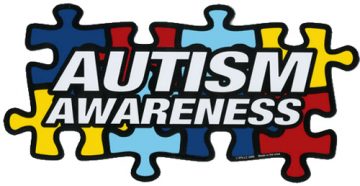
April is World Autism Month. The purpose of this initiative is to celebrate and raise more awareness for the autism community around the world.
What does autism refer to? The term indicates a spectrum of conditions that often include weak social skills, “repetitive behaviors and speech, and nonverbal communication” (source). In recent years, there has been more portrayal of autism in the media, whether it’s TV shows, movies, books or social media. This is supposed to be good, as it means that the autistic community is getting more recognition. However, the portrayals of autism in the media are not always accurate ones.
In a New York Times article, author Marie Myung-Ok Lee pointed out that there has been an increase in the number of novels where characters who have autism or the symptoms of the disorder are being used as a plot device. She explained that most of these books either describe having autism as a strongly positive or intensely negative circumstance. The reason for this, as Lee explained, is the “lack of voice with autism,” which allows writers to portray autism as almost anything: “a gift, a curse, super intelligence, mental retardation” and other things.
Similar to Lee’s observations, in an article published in Spectrum News, Alison Singer states that there is often an “overly positive depiction” that doesn’t represent the majority of people on the autistic spectrum in real life. The main character on ABC’s show “The Good Doctor” fights obstacles to succeed as a doctor, but this experience is very different from most nonverbal adults with autism, who have trouble finding a job in real life. The unrealistic portrayal of autism may increase viewers’ sympathy in the short run, but ultimately hurts autistic people and their loved ones when fans of “autistic” characters discover that the reality is so far from the idealized version they’ve encountered in entertainment media.
I interviewed senior Amanda C., who has personal experience from babysitting an autistic child, to find out how people with autism in real life differ from the media’s portrayal. She says that she hasn’t seen any of the autistic symptoms that she’s dealt with when babysitting appear in TV shows: “You can definitely see characters who are on the spectrum, but their symptoms are portrayed as charming and not entirely realistic.” When asked about why she thinks there’s a more positive depiction of autism in movies and TV shows, her response is that since they’re for entertainment, “a lot of the truth is being shadowed—for example how an autistic person might feel.” She comments that “it shouldn’t be portrayed negatively, it’s something really common around the world but many common symptoms like holding your ears or crying when there’s too much noise” aren’t portrayed on TV. Amanda thinks that the portrayal of autism in the media has been “sugarcoated to the fact where some people who are watching the show and have no awareness of autism might not know anything about the really common symptoms.” This inaccurate portrayal of autism may lead to the misconception that “autism is a light thing and many don’t know that it can be a serious thing,” so when people actually meet autistic people on the more severe end of the spectrum, “they’re clueless and have no idea how to handle the situation,” Amanda says.
To get a professional opinion, I interviewed Yi Yu L., who is a teacher at a special education kindergarten in Taiwan, on her thoughts about the impact that media has on people’s understanding of autism. She states that in much of entertainment media, portrayals are of people with high-functioning autism such as the character in the film “Rain Man”, which represents a “very small population of people on the spectrum of autism,” thus, is not a very accurate representation of the autistic community. She says that since autism occurs on a spectrum, “most of the media’s portrayal is often on the extreme of the spectrum” or the minority group of high-functioning autistics. Many people fall somewhere in the middle of the spectrum, but this is often not being presented on the media. Much like what Amanda C. said, Yi Yu also believes that this causes people to be “afraid of interacting with autistic people when they see symptoms that were not portrayed on the media,” which can lead to the autistic community becoming more ostracized in the real world.
The truth is, many of the autistic people we encounter are on the more functional end of the spectrum and they can fit into society just fine with some help, but they miss the chance “because of people’s fear to interact with them based on the media’s portrayal.” Additionally, Yi Yu says that the media’s portrayal creates a misconception that makes it seem difficult to interact, but “with some more patience and observation, [she thinks] that most people can find a way to communicate and interact with autistic people.”
Although the media’s increasing representation of autism signals an improvement in society’s acceptance of autism, more effort could be put into making the portrayals more accurate and nuanced, making them more useful in raising awareness about autism. A little effort can go a long way in making the lives of autistic people easier.
For more information about autism, visit Autism.org or AutismSpeaks.org.